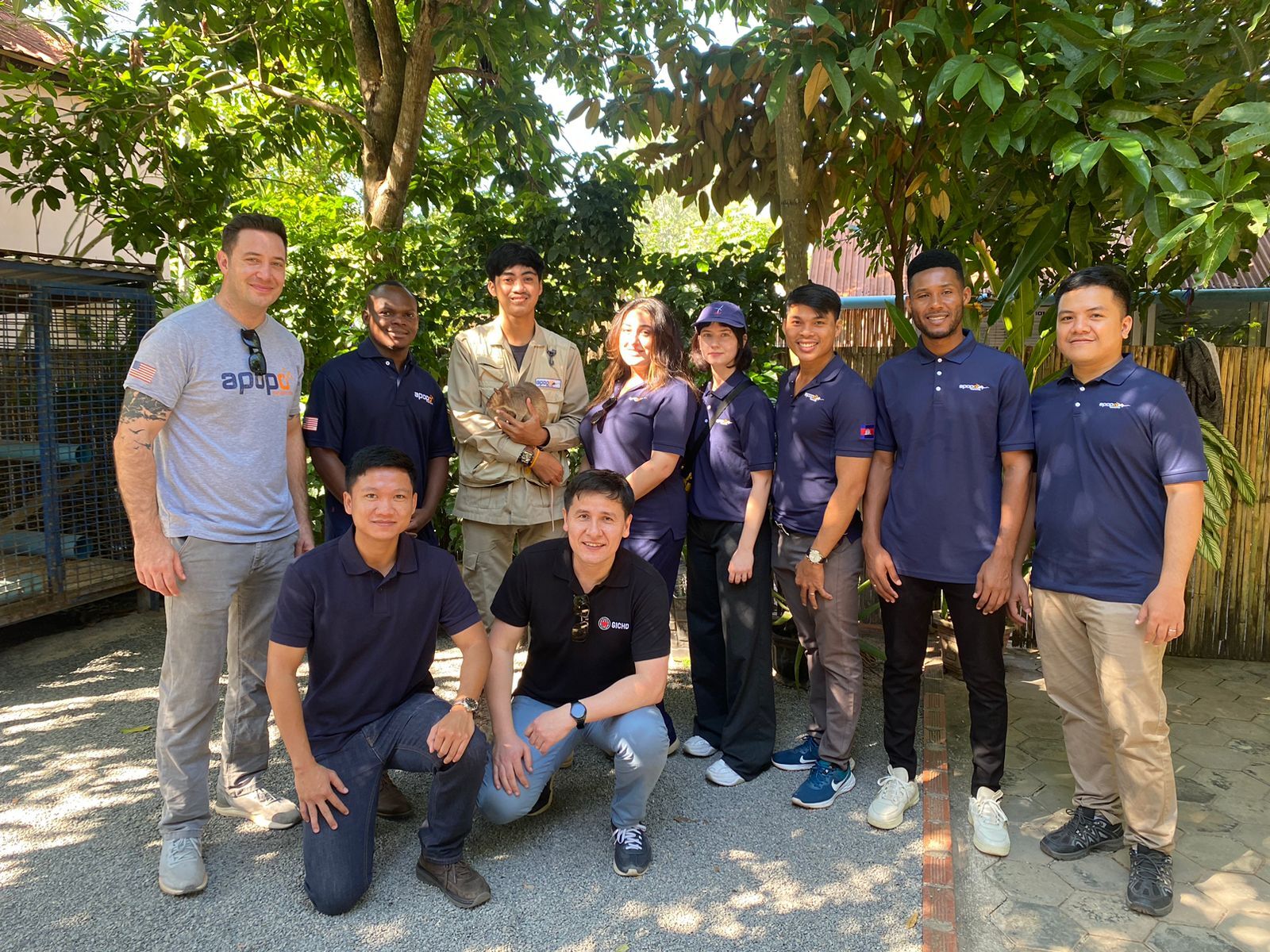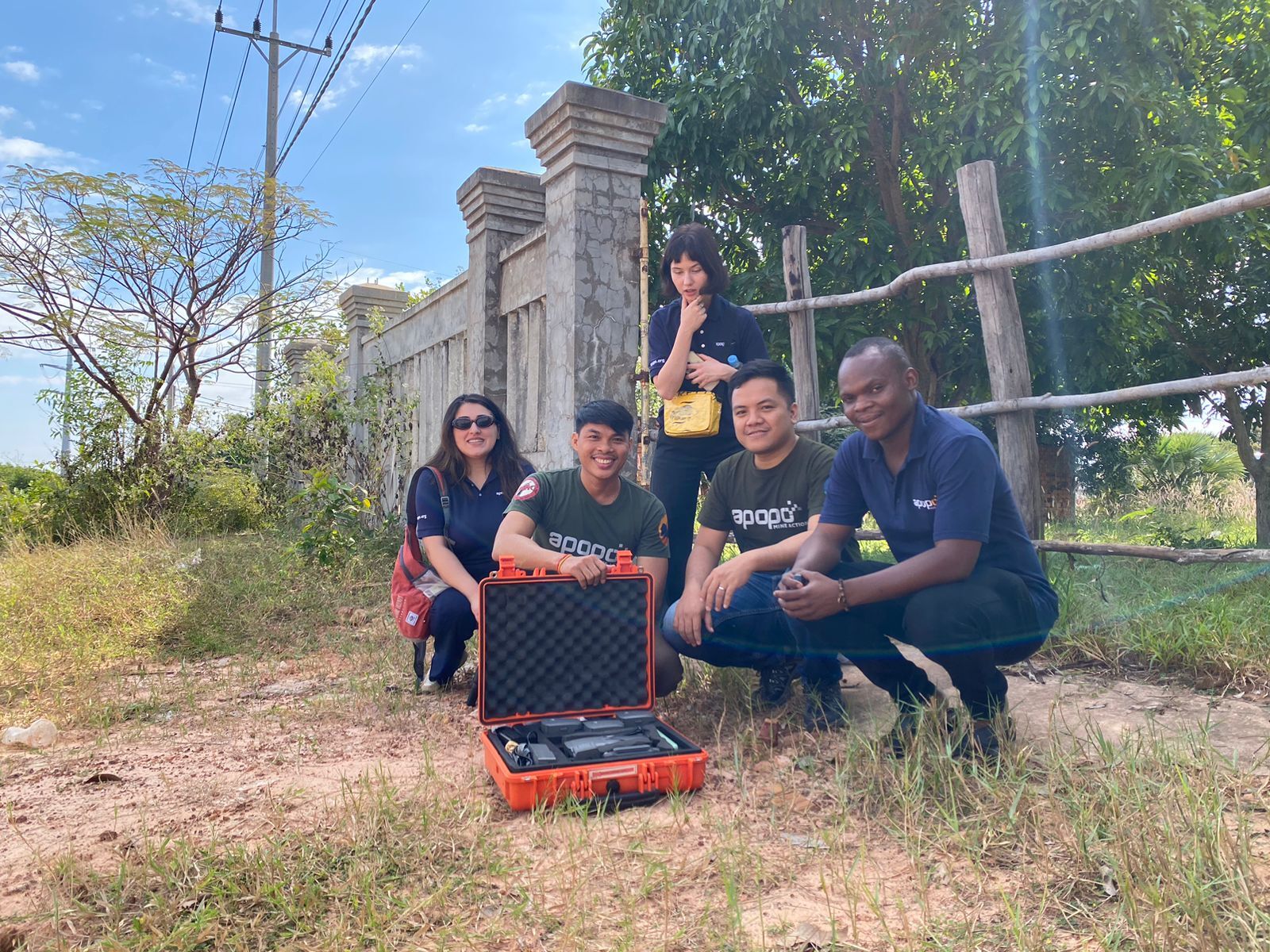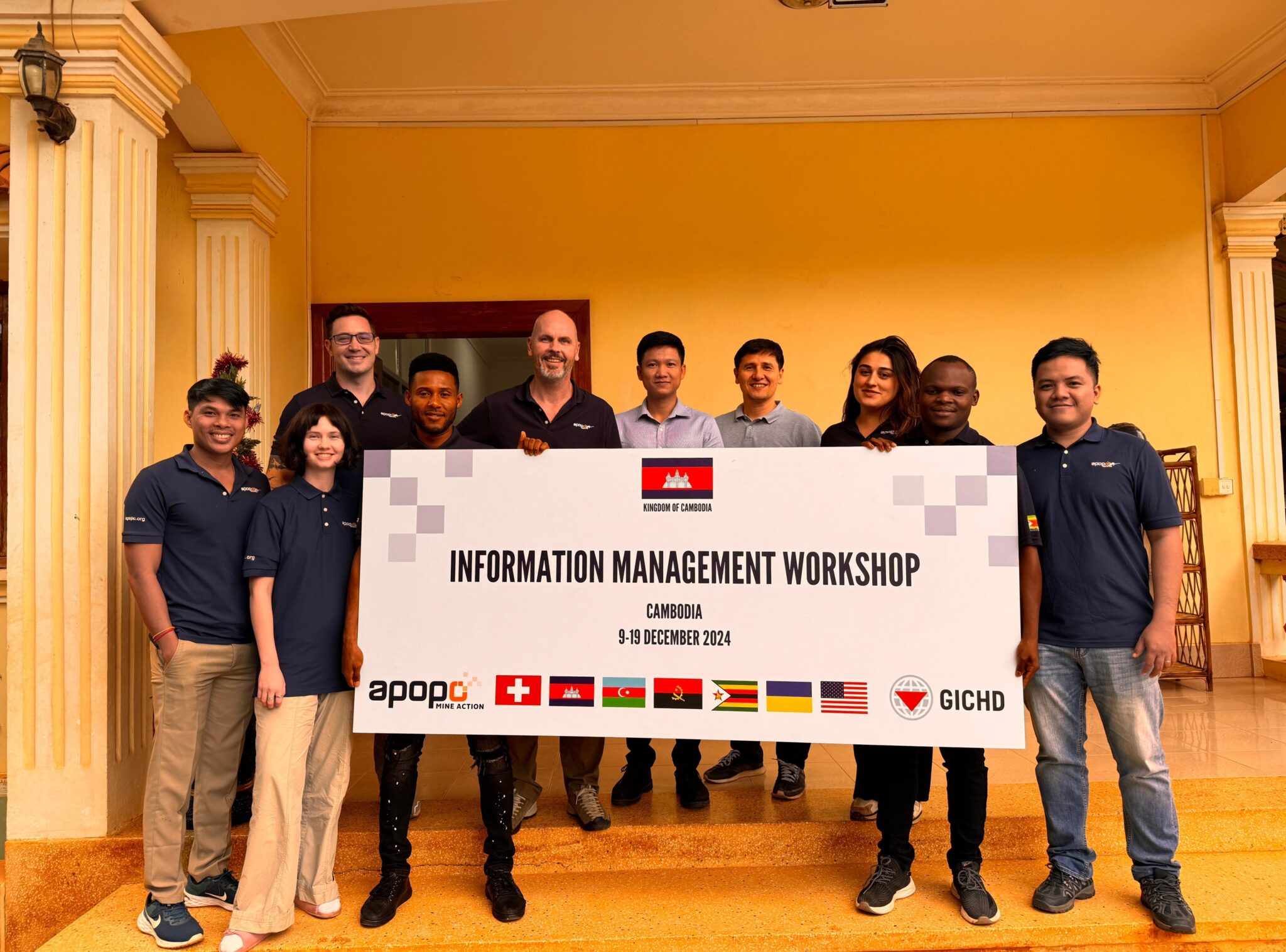From December 9-19, APOPO held its first-ever Information Management (IM) Workshop in Siem Reap, Cambodia, bringing together Information Management Officers from across our programs. The workshop gave them the chance to share experiences, work together, and solve technical challenges as a team. The goal was to strengthen the way APOPO collects, processes, and uses data to support its work in mine action.
The event was supported by Erkin Huseinov, an Information Management Advisor from the Geneva International Centre for Humanitarian Demining (GICHD) and Rithysak Sorn from the Humanitarian Demining Research and Development Program (HDR&D). Both experts provided valuable guidance throughout the training sessions.
The Role of Information Management in Mine Action

In mine action, clearing landmines safely and efficiently depends on good information. Large amounts of data need to be collected, organized, and analyzed to decide where to focus clearance efforts, track progress, and share results with authorities and local communities.
Information Management (IM) systems help organize this data so that it is accurate, easy to access, and useful for decision-making. Geographic Information Systems (GIS) allow teams to create detailed maps showing mine-contaminated areas, clearance zones, and safe land for resettlement or farming. Without well-organized information, it would be difficult to make the best use of resources and ensure the safety of demining teams and local communities.
Topics Covered in the Workshop
During the workshop, participants took part in specialized IM and Geographic Information Systems (GIS) training sessions. These covered topics such as:
Using Arcade and Python for Better Data Processing
Participants from APOPO’s programs in Angola, Azerbaijan, Cambodia, Ukraine and Zimbabwe learned how to use Arcade and Python, two programming languages that help process data more quickly and automatically. These tools can reduce the need for manual work, improve the accuracy of reports, and create clearer maps.
Automating Tasks with Model Builder
The workshop introduced Model Builder, a tool that allows teams to set up step-by-step processes for handling data. Instead of doing the same task manually over and over, Model Builder can be used to create an automated workflow that runs the process in a few clicks. This saves time and reduces the chance of errors.
Building Stronger Information Systems
Participants discussed how to design better ways to store and organize data so that it is easy to find, use, and share. A good data management framework ensures that information is structured in a logical way, remains secure, and can be accessed by the right people when they need it. Well-organized systems also help different teams work together more smoothly, preventing problems such as lost or outdated information.
Using Drones (UAS) for Mapping and Data Collection

Unmanned Aerial Systems (UAS), commonly known as drones, are becoming an important tool in mine action. During the workshop, participants learned how drones can be used to map areas suspected of having landmines before teams begin work on the ground. Drones take high-quality images from the air, which can then be analyzed to identify hazardous areas, plan clearance operations, and monitor progress. This technology can improve safety and make operations more efficient.
Preparing for the Future
This workshop helped set clear goals for improving how APOPO collects and manages information over the next year. Each Information Management Officer left with specific tasks to put into practice within their programs.
By improving our information systems and making data easier to use, APOPO can make better decisions, work more efficiently, and help more communities reclaim their land safely. This workshop was the first step in building stronger systems for the future, and we look forward to seeing the impact of these improvements in our life-saving work.

